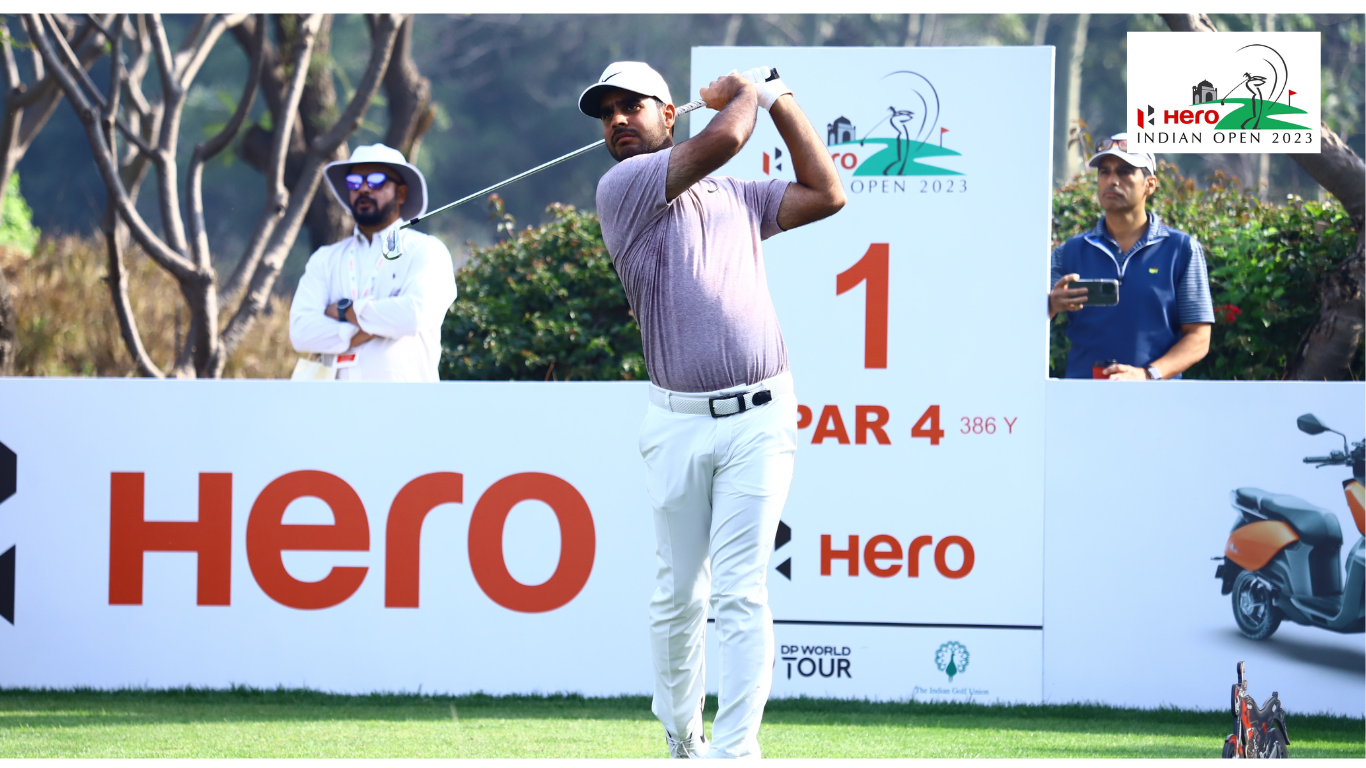
Shubhankar Sharma registered a tied-13th finish at the high profile event
The Hero Indian Open successfully returned this past week after missing three years from 2020 to 2022 because of the Covid pandemic. That India’s most prestigious golf event is back on the calendar is great news for Indian golf.
The Indian Open offers home-grown players the chance to compete against a higher level of competition, a vital ingredient in their development. Going four years between events means India’s golfers lost out on that experience, and the chance to see how their games stand up against those who compete on a higher tour. It also deprived them of the chance to win their national open, a matter of great pride and achievement.
This year’s event was co-sanctioned by the DP World (European) Tour and PGTI and prize money was increased from 1.75 million USD to 2 million USD, a new record for India which has the potential to attract a higher quality field and award more world ranking points.
The event itself was exciting and came down to the 72 nd hole, with Marcel Siem ultimately rallying to beat German compatriot Yannik Paul by one shot. If there was one disappointment, it was that no Indian was in contention on the last day. In fact, only two Indian players were under par on the final day – Shubhankar Sharma, who shot 68, and Yuvraj Sandhu, who shot 70. The rest struggled when the lights were brightest. In fact, no Indian finished in the top-10, even though both Veer Alawat and Honey Baisoya started their final rounds inside that mark.
View this post on Instagram
Manu Gandas, who last year broke the records for most wins and most money earned on the PGTI Tour to earn his European Tour card, broke par only once – on the first day.
A high-profile event which attracts the best players in the world can help the game develop in India just like the LPGA’s Thailand event. As India Golf Weekly detailed in a piece in May, 2022, the rise of Thai women’s golf can be traced to the start of that event in 2004.
The Indian Open can potentially play the same sort of role in Indian golf . It’s long history includes winners such as major champions Peter Thompson and Payne Stewart.
In fact, the growth of Indian golf in the early to mid-2000s can be traced back to Ali Sher’s landmark win at the 1991 Indian Open. Sher’s victory, the first by an Indian professional, proved that Indian golfers could compete on this stage and opened the floodgates for Indian pros to win 11 of the next 25 Indian Opens, while the likes of Jyoti Randhawa, Jeev Milkha Singh and Arjun Atwal became regular winners on the Asian Tour and made their mark in Europe also.
The Indian Open needs to become much more than just another European Tour event – It’s the jewel in the crown of Indian golf and must fulfil its promise of becoming an inspiration to future generations of Indian champions. .
Credits:-
Photo – DPWTR


